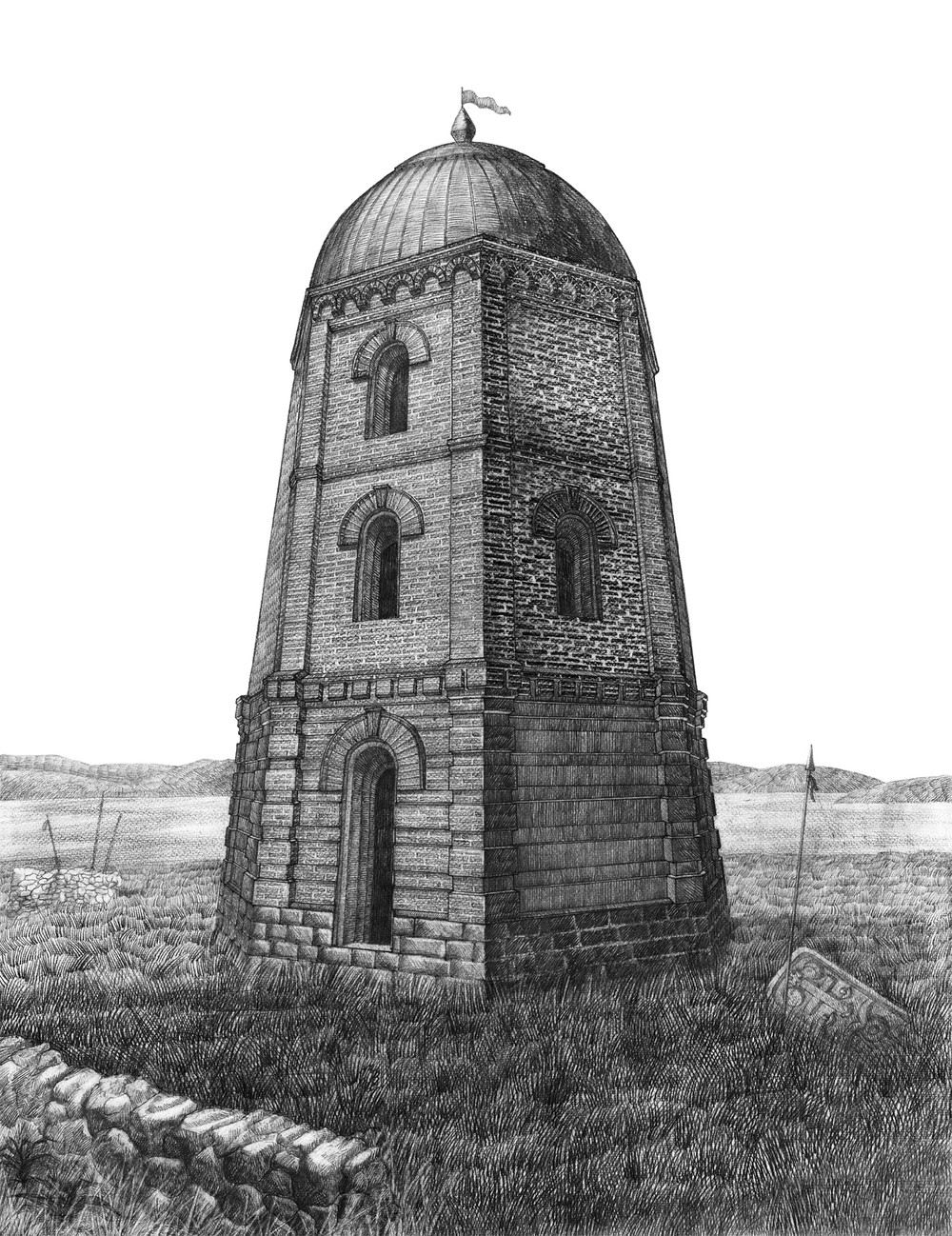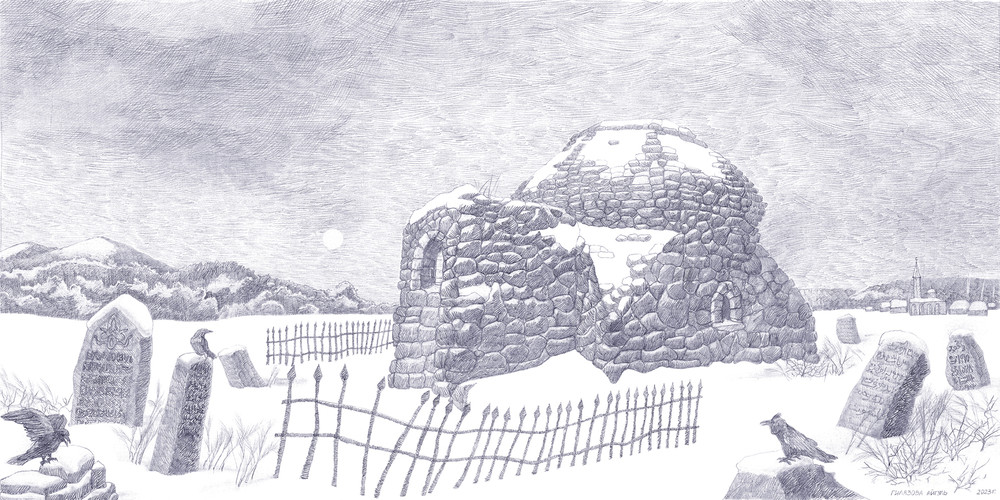«Рисунок-проект/Коллекция архитектуры»
Объявление участников выставки: до 25 апреля 2024 года

Айгуль Гилязова
- 53
- 2
Author: Aigul Gilyazova
"Воин". Рисунок "Воин" символизирует смелость и стойкость башни-воина. Водонапорная башня стала не только объектом инженерного исторического наследия, но и впоследствии обсерваторией, изменив взгляд на мир через призму научных исследований. Этот символ города Уфы, стоящий как воин, защищающий свою родину, напоминает об историческом и культурном значении данного сооружения. Стремительное развитие технологий не мешает ему оставаться важным элементом городского ландшафта и памятником архитектуры. Пусть каждый, кто встречает взглядом этот рисунок, помнит о нашей истории, о том, что каждое сооружение имеет свою уникальную историю и значение для общества.
"Вечность".На работе изображен мавзолей Тура-хана, археологический памятник XIV века, расположенный в Чишминском районе Республики Башкортостан .История вдохновила на создание работы с изображением мавзолея Тура-хана для передачи атмосферы исторических событий. Легенда приписывает сооружение мавзолея Турахану. Когда-то вокруг стен размещалось старое кладбище, но в период борьбы с «религиозными пережитками» надгробные камни с надписями уничтожили. В рисунке воссозданы архитектурные детали мавзолея,- одиноко стоящего на холме белокаменного здания портально-купольной формы, и передана монументальность здания, его величие и красота. Для мусульманской средневековой архитектуры характерна трехчленность, которая требует гармоничных переходов от четверти стен к барабану. Зодчие использовали прием срезанных углов, чтобы создать гармоничный переход квадрата к восьмиграннику. Также важным элементом был портал, который служил украшением фасада. В кэшэнэ Турахана вход вынесен за счет пристройки крытой галереи. Около здания чуть заметно торчит из земли широкий камень с куфической надписью: «Бог бессмертен; всякий, повинившийся Богу, должен по воле Божией умереть, когда наступит тому время». «Все, кто на сем свете, по воле Божией, пойдут на тот свет, и каждый должен дать там ответ, что сделал хорошего или худого». «На сем месте погребена Схиб-Зимал, жена хана». Обширные развалины около гробницы этой указывают на значительной величины город с признаками магометанских мечетей. Башкирское предание называет владетелем этого города Тура-хана, потомка Чингисхана.
The drawing "Warrior" symbolizes the courage and steadfastness of the warrior tower. The water tower became not only an object of engineering historical heritage, but also later an observatory, changing the view of the world through the prism of scientific research. This symbol of the city of Ufa, standing like a warrior defending his homeland, reminds us of the historical and cultural significance of this structure. The rapid development of technology does not prevent it from remaining an important element of the urban landscape and an architectural monument. Let everyone who meets this picture remember our history, that every structure has its own unique history and significance for society.
The drawing "Eternity" depicts the mausoleum of Tura Khan, an archaeological monument of the XIV century, located in the Chishma district of the Republic of Bashkortostan. The history inspired the creation of a work depicting the mausoleum of Tura-Khan to convey the atmosphere of historical events to future generations. Legend attributes the construction of the mausoleum to Turakhan. Once there was an old cemetery around the walls, but during the struggle against "religious vestiges" tombstones with inscriptions were destroyed. The drawing recreates architectural details of a white stone building of portal-dome form standing alone on a hill and conveys the monumentality of the building, its grandeur and beauty. Muslim medieval architecture is characterized by a three-part structure (walls, drum, dome), which requires harmonious transitions from the quarter walls to the drum. Architects used the technique of cut corners to create a harmonious transition from square to octagonal. Also an important element was the portal, which served as a decoration of the facade. In Turakhans keshene the entrance is removed due to the addition of a covered gallery. Near the building, a wide stone with a Kufic inscription sticking out of the ground is slightly visible: "God is immortal; anyone who has obeyed God must die by Gods will when the time comes." "All who are in this world shall, by the will of God, go to the other world, and everyone must give an answer there as to what he has done good or bad." "In this place is buried Schib-Zimal, the wife of the Khan." The extensive ruins near this tomb indicate a city of considerable size, with signs of Mohammedan mosques. Bashkir legend names Tura-khan, a descendant of Genghis Khan, as the owner of this city. Tura-khan was under the rule of the Siberian khan Kuchum, but then, having quarreled with the latter, he and his horde, including 8000 wagons, retreated to the Ufa River, then, after standing for 4 months near Tura-tau (city mountain), retreated to Islak and there founded the city, recognizing the power of the Kazan king.
Размеры рисунка или рисунков (в см) / Sizes of the Drawing/Drawings (cm): 74х58; 40х80
Drawing technique / Техника исполнения : paper, pencil / Бумага, карандаш
Год исполнения / Year of the Drawing: 2022; 2023
-
2012 © www.archigraphics.ru.
Любое использование материалов сайта запрещено без согласования с администрацией сайта.
Техническая поддержка / Support










enoka777 355 дней, 4 часа, 27 минут назад
Айгуль Гилязова 343 дня, 14 часов, 15 минут назад